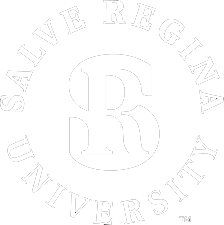
Improving Efficiency with Better Connectivity
Salve Regina University
Why Pathify
Modern, mobile, easy-to-use
Salve Regina University was looking to update their old student portal. What they found was a solution that does so much more.

We were in the market for a new portal, so we started investigating our different options, and we came across Pathify. It was very impressive: the nice modern feel, the amount of integration and especially the mobile-native functionality.
– Christine Dumont, Enterprise Apps
About Salve Regina University
Salve Regina University is a liberal arts university stretching 80 acres in Newport, R.I. The institution believes in empowering students to explore their talents through diverse academic offerings, student organizations, service initiatives and athletics. Salve prides itself on providing a collaborative learning environment to help students fulfill their academic and personal potential.
A Modern Portal for a Modern Campus
Christine Dumont, Senior Director of Enterprise Applications at Salve Regina University (SRU), believes the majority of Information Technology projects tend to revolve around administrative needs rather than focusing on student success. In her mind, optimizing the student experience is a by-product of projects focused on business efficiencies rather than the primary goal.
But Dumont is not like most higher ed IT leaders. Instead, she places the needs of IT and students on equal footing. Her dedication to improving the student experience eventually led her to implementing Pathify after the platform blew her away with the modern interface the Engagement Hub offered over their incumbent SharePoint portal.
Pathify’s easy-to-use interface and mobile app helped persuade the team at Salve Regina to make the switch over to the Engagement Hub without ever looking back since.
Transitioning Out of the Bottleneck
The previous SharePoint portal presented a number of challenges for Salve. Without any dedicated administrators, Dumont and her team struggled to support the portal when it didn’t work quite right or suddenly went down for a number of hours. Since the portal linked to a number of applications students use on a day-to-day basis, these outages created the potential to cause plenty of disruption.
Salve’s SharePoint portal made it difficult for other departments to be self-sufficient with their content. Whenever an employee wanted to publish a new page or add files, the staff member needed to wait for IT to publish the resource. Not only did this create a significant bottleneck for other departments, but also created additional strain on Dumont’s IT team.
“That was off-putting because our time is already challenging to get a hold of,” she said. “You had to know how to go in there, set up the HTML template and put the page in the right group.”
I thought it was a fresh modern take on a student portal that not only combined the security pieces we needed with the standardization of a single sign-on pathway that was secure to our other applications.
– Christine Dumont, Enterprise Apps
Salve also struggled with lack of adoption in its previous portal. Dumont described the portal as mostly “a pathway to Ellucian products,” with no regard for the student experience and wasn’t aesthetically pleasing.
In hopes of finding a better solution, Salve Chief Information Officer Irving Bruckstein recommended Pathify to the IT department. The improved UX surprised Dumont and led to her team making the switch.
“I thought it was a fresh modern take on a student portal that not only combined the security pieces we needed with the standardization of a single sign-on pathway that was secure to our other applications,” Dumont said.
Giving Ownership Back to Departments
Pathify’s WYSIWYG Pages content management system dramatically helped IT give content ownership back where it belongs — with the individual departments. Now content stays up-to-date and IT no longer owns responsibility for posting individual pages and files.
The CMS requires no prior knowledge of HTML and includes easily configurable templates with permissions managed through the admin portal.
“People don’t have to call IT,” Dumont said. “We can set them up and as long as we set up the security and visibility properly, [our employees] can manage their own content and messaging. That’s empowering.”
Part of providing departments with agency means improving the security culture at the institution without requiring micromanagement.
Since Pathify uses single sign-on to access the Engagement Hub, students are automatically signed into all of their other applications. This provides convenience for the student and a more secure interface rather than having individual passwords and links to each application.
This policy keeps Salve’s software investments secure and generates 100% portal adoption — a significant increase over its low adoption rate with the previous SharePoint portal.
People don’t have to call IT. We can set them up and as long as we set up the security and visibility properly, [our employees] can manage their own content and messaging. That’s empowering.
– Christine Dumont, Enterprise Apps
Salve Regina knows partnering with Pathify means owning an up-to-date product. When the team offers suggestions to improve the product, Dumont knows someone listens to her requests.
“What I find is that if things are in development, when they come to pass through your development cycle and are actually released for general consumption, they are pretty solid,” Dumont said. “It’s not like I’m working with products that haven’t been well tested.”
As a result of Dumont’s trust in Pathify, Salve plans to collaborate on a number of projects to bring more student services into the Engagement Hub. Next up, the institution plans on integrating TouchNet into its Balances widget to give students more robust information in regards to their available funds and dining meals.
With Pathify, Salve Regina no longer limits itself, instead it can stretch its Student Portal to meet its students’ needs.